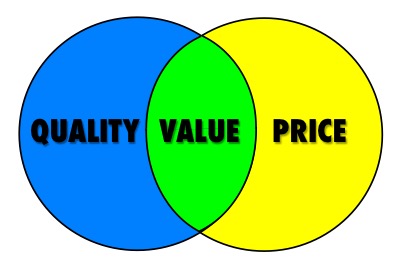RECIPE TO RETAIL: Part 9…

One of many challenges food brands face is pricing products to optimize sales and profit. Get it right and it can lead to a profitable business. However, too high a price will negatively impact listings and sales. And too low a price will eat into profits and eventually kill the business.
Pricing is part of the marketing strategy and should be aligned with the brand strategy, as the retail price can influence consumer expectations of the brand.
Start with the cost of goods, which is the cost of producing the product. Then factor in other components such as:
- overhead;
- your profit margin;
- marketing (promotional allowances, flyer placement, sampling programs);
- distribution; and
- brokerage fees (a fixed percentage of sales depending on the volume).
Also consider retail listing fees and unexpected business expenses due to currency fluctuations, product write-offs and, heaven forbid, product recalls. The final product cost is referred to as the “cost of goods sold” (COGS).
Prepare “what if” scenarios to determine the difference in profitability when the COGS and retail price change.
Calculation of gross margin (GM)
The same formula is used to calculate gross margins for manufacturers, distributors and retailers:
Retail price – COGS = GM$ ÷ retail price = GM%
Example: $1.99 – $1.49 = $0.50 GM ÷ $1.99 = 0.25 = 25% GM
A vicious circle
When sales volume is low it creates a catch-22 situation. Lack of buying power results in a higher cost of goods, which leads to high pricing and ultimately, low sales. Formulating products with premium ingredients such as organic or non-GMO exacerbates the situation, making it a challenge to achieve the optimal price.
Before product development begins, set targets for the cost of goods and suggested retail price to guide decision-making and keep costs in line. The target retail should take into consideration brand positioning, competitor pricing, what the target customer is willing to pay and retailer gross margin expectations, which could be 30% to 50%. Keep in mind that the retailer determines the final retail price.
A tough sell
Price increases are difficult conversations to have with retailers. If the initial price was too low, they may not accept an increase. And if they do, the increase will likely be passed on to consumers, resulting in a volume decline.
Price sensitivity
How much is the consumer willing to pay? There’s a limit. That’s why it’s important to have a point of difference that is relevant for the target customer. Products that satisfy an unmet consumer need generally have more pricing latitude because there is little or no competition.
Consumer survey respondents often say they are willing to pay more for certain attributes or benefits, but in reality that may not be the case. Don’t make crucial business decisions based on surveys alone.
Promotions, a necessary evil
Canadian shoppers have become value-seekers, making 35% of their purchases on a temporary price reduction (TPR). Promotions are necessary to drive sales, but beware of habitual discounting. Never sell your product for less than it cost to make.
Getting the price right is a balance of art and science. Effective pricing is about knowing your costs, customers and competitors, establishing an attractive price and ensuring every sale is profitable.
As a packaged foods consultant, Birgit Blain helps brands that struggle to maintain listings. Her experience includes 17 years with Loblaw and President’s Choice®. Contact her at Birgit@BBandAssoc.com or learn more at www.BBandAssoc.com
© Birgit Blain
This article appeared in Food in Canada magazine.

